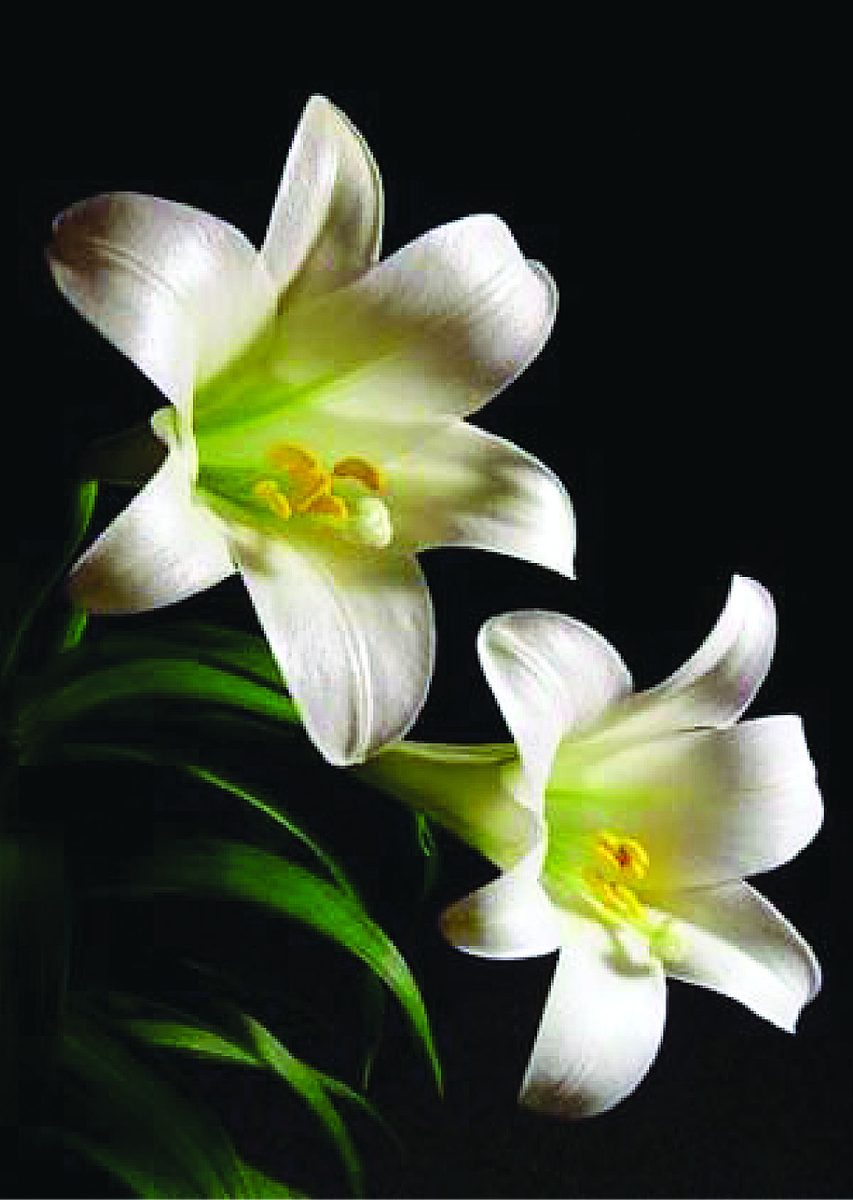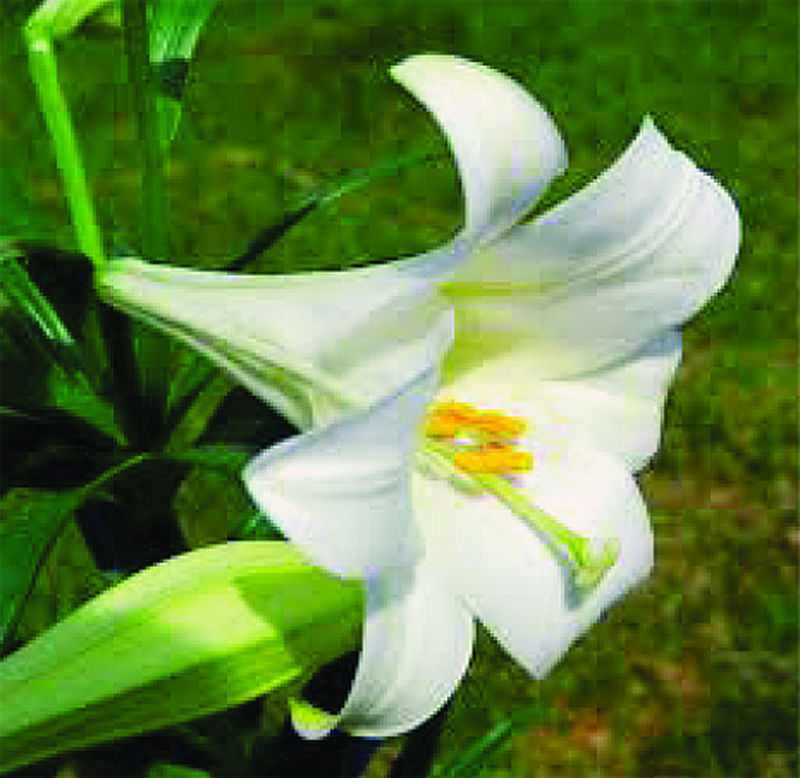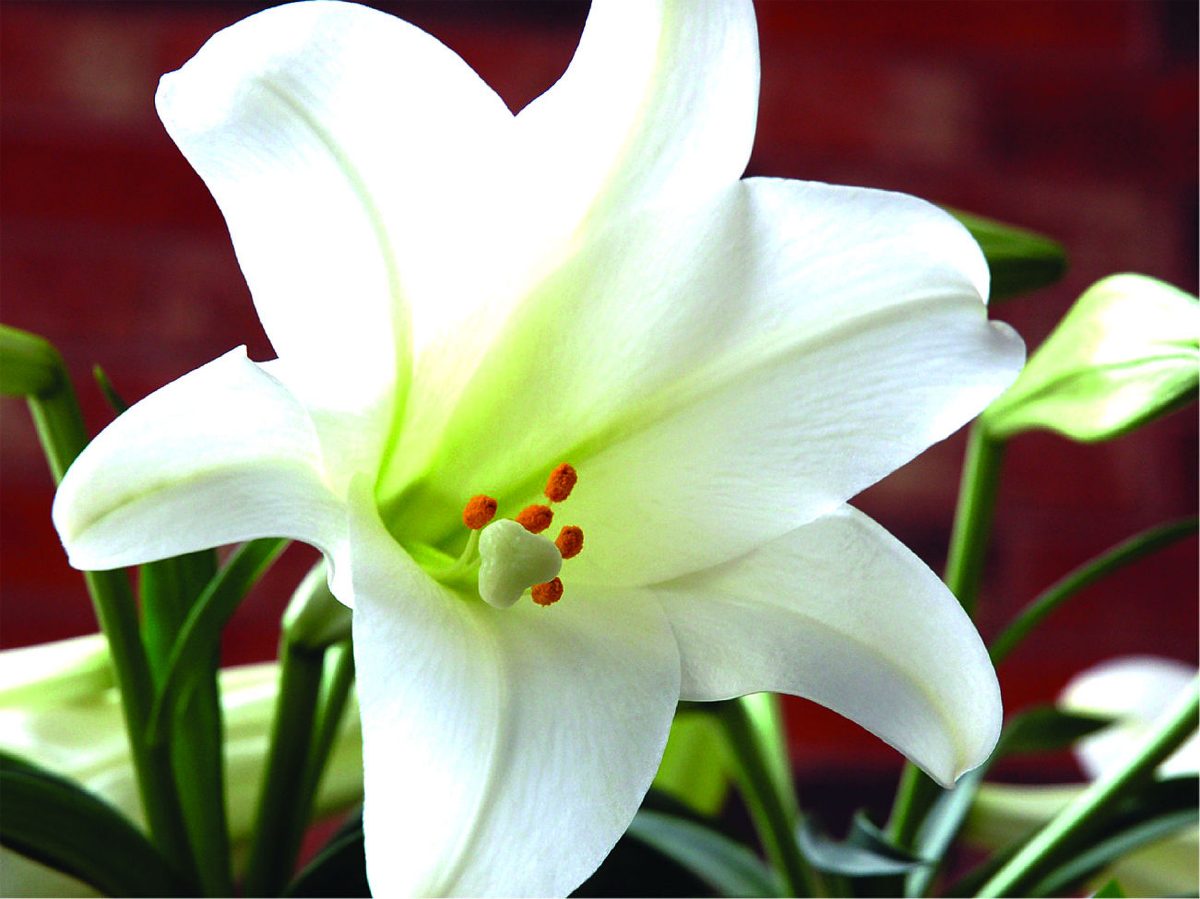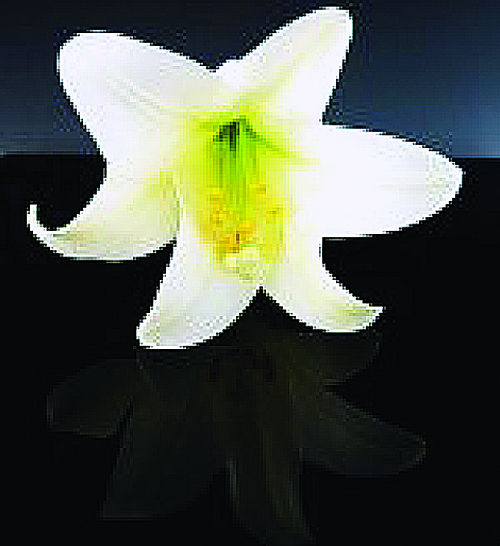BY LORI MURRAY
The beautiful trumpet-shaped white flowers that blanket our altars this special season symbolize purity, innocence, hope, and life – the spiritual essence of Easter.
History, mythology, literature, poetry, and the world of art are rife with stories and images that speak of the beauty and majesty of these elegant flowers. Often called “the white-robed apostles of hope,” lilies were found growing in the Garden of Gethsemane after Christ’s Agony.
Tradition has it that the beautiful white lilies sprang up where drops of Christ’s sweat fell to the ground in His final hours of sorrow and deep distress. Churches continue this tradition at Easter time by banking their altars and surrounding their crosses with masses of Easter Lilies to commemorate the resurrection of Jesus and the hope of everlasting life. Since the beginning of time, lilies have played a sIgnificant role in allegorical tales concerning motherhood. Roman mythology links the lily to Juno, the queen of the gods. The story goes that while Juno was nursing her son Hercules, excess milk fell from the sky. Although part of it remained above the earth and created the group of stars known as the Milky Way, the remainder fell to earth and created lilies.
Another legend has it that the lily sprang from the repentant tears of Eve as she went forth from the Garden of Eden.
The pure white lily has long been associated with the Virgin Mary. In early paintings, the Angel Gabriel is pictured extending to Mary a branch of pure white lilies and announcing that she is to be the mother of the Christ Child.
In other paintings saints are pictured bringing vases of white lilies to Mary and the Infant Jesus. Saint Joseph is depicted holding a lily branch in his hands to indicate that his wife Mary was a virgin.
A legend tells that when the Virgin Mary’s tomb was visited three days after her burial, it was empty except for bundles of majestic white lilies.
Early writers and artists made the lily the emblem of both the Annunciation and of the resurrection of the Virgin, the pure white petals signifying her spotless body and the golden anthers her soul glowing with heavenly light.
A mark of purity and grace throughout the ages, the regal white lily is a fitting symbol of the greater meaning of Easter.
The flowers embody purity and joy, hope and life, as they grace millions of homes and churches. Whether given as a gift or enjoyed in your own home, an EasterLily serves as a beautiful reminder that Easter is a time for rejoicing and celebration.
We can thank Louis Houghton, a World War I soldier, for the popularity of the Bermuda Lily – now known as the Easter Lily – in our country.
In 1919 he brought a suitcase full of hybrid lily bulbs to the southern coast of Oregon and gave them to family and friends to plant.
As it turned out, the climate there was ideal for growing this lily, a native of the Ryukyu Islands of Japan, and by 1945 more than 1,000 West Coast growers were producing bulbs for the commercial market.
Despite a sales window of only about two weeks each year, Easter Lilies are the fourth largest potted plant crop in the United States, ranking among poinsettias, mums, and azaleas as America’s favorite potted plant. For maximum enjoyment of your Easter Lily, remove the yellow anthers before the pollen starts to shed. This gives longer flower life and prevents the pollen from staining the white petals.
When a mature flower starts to wither after its prime, cut it off to make the plant more attractive while you enjoy the fresher, newly opened blooms.








